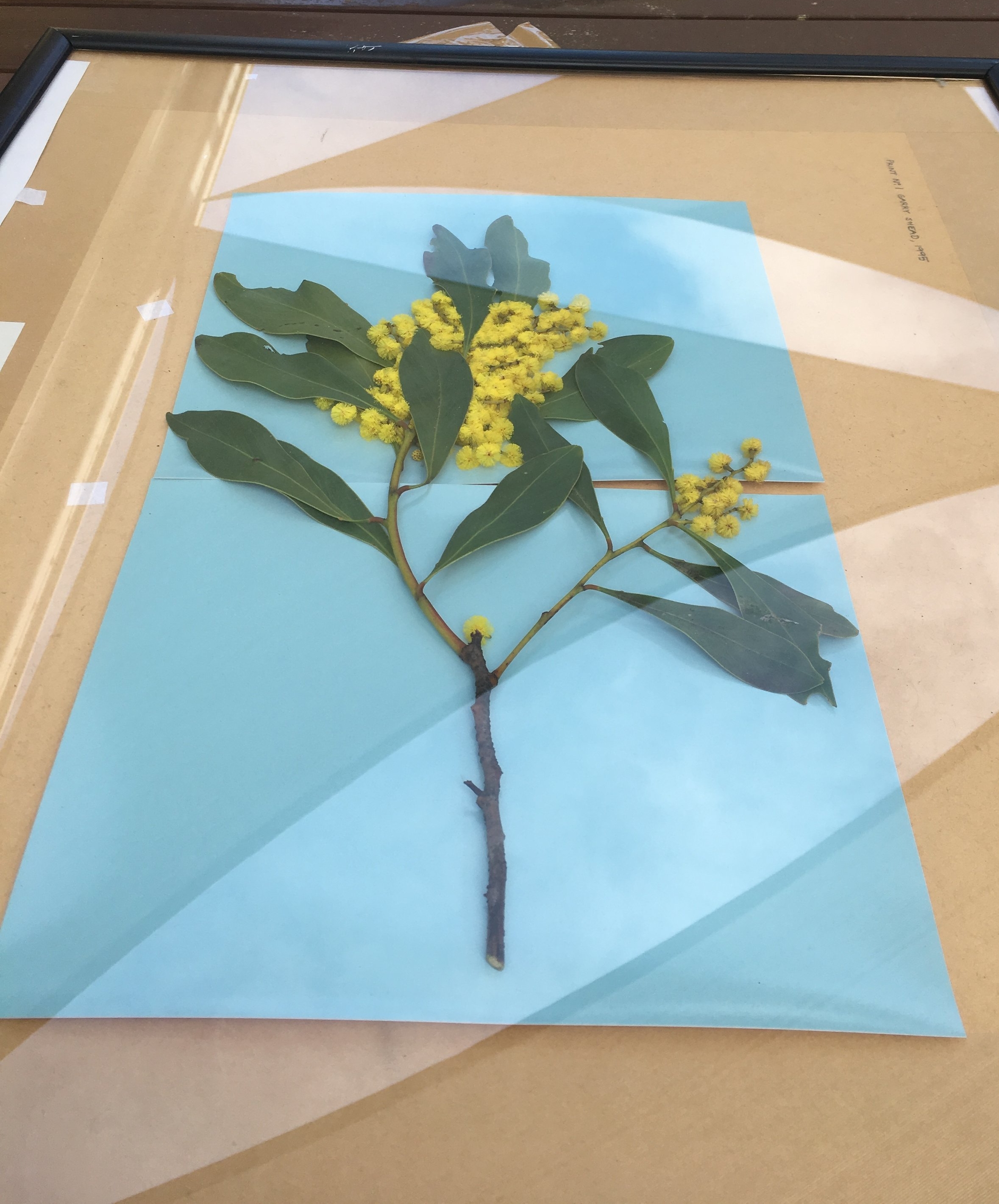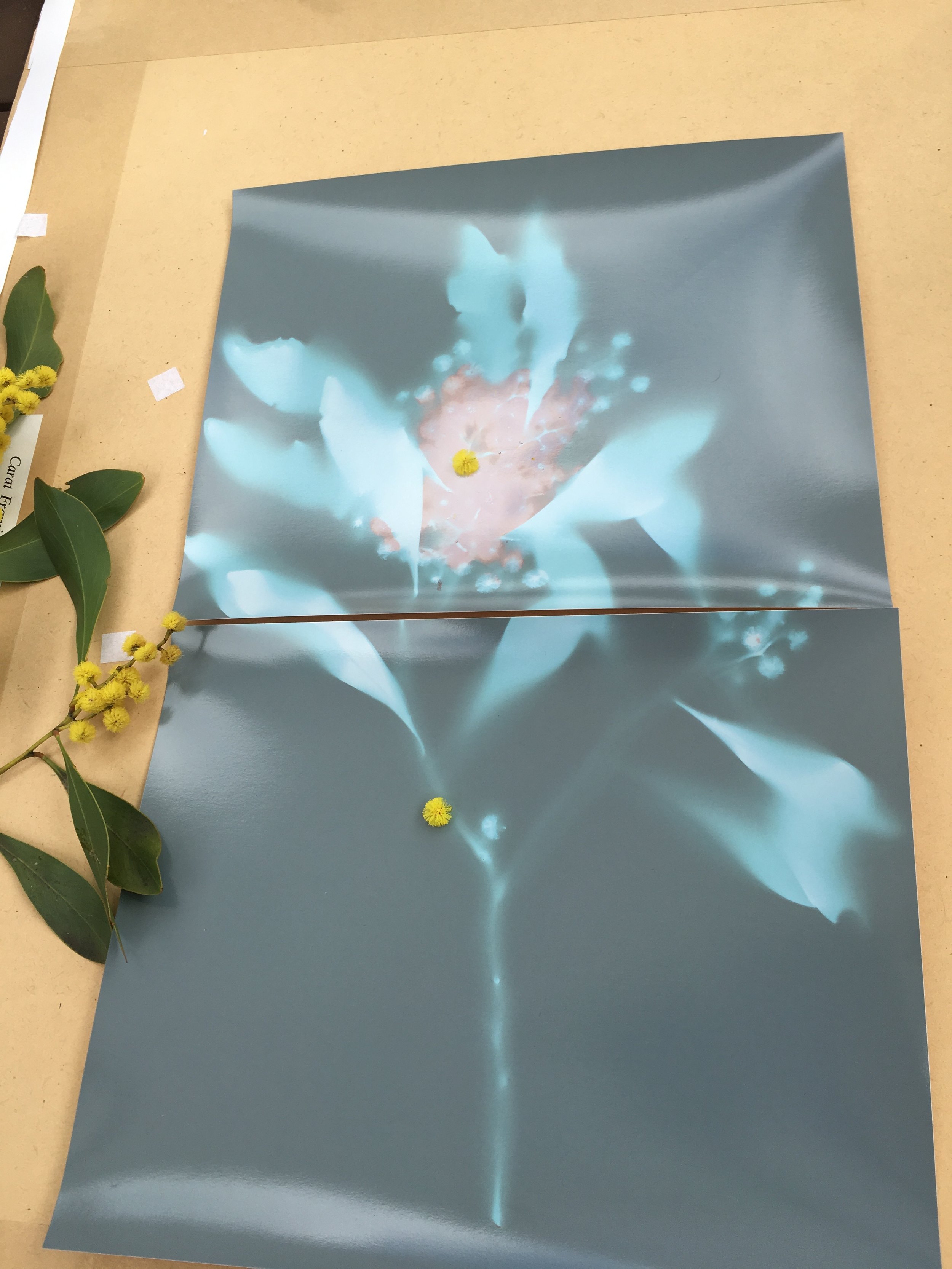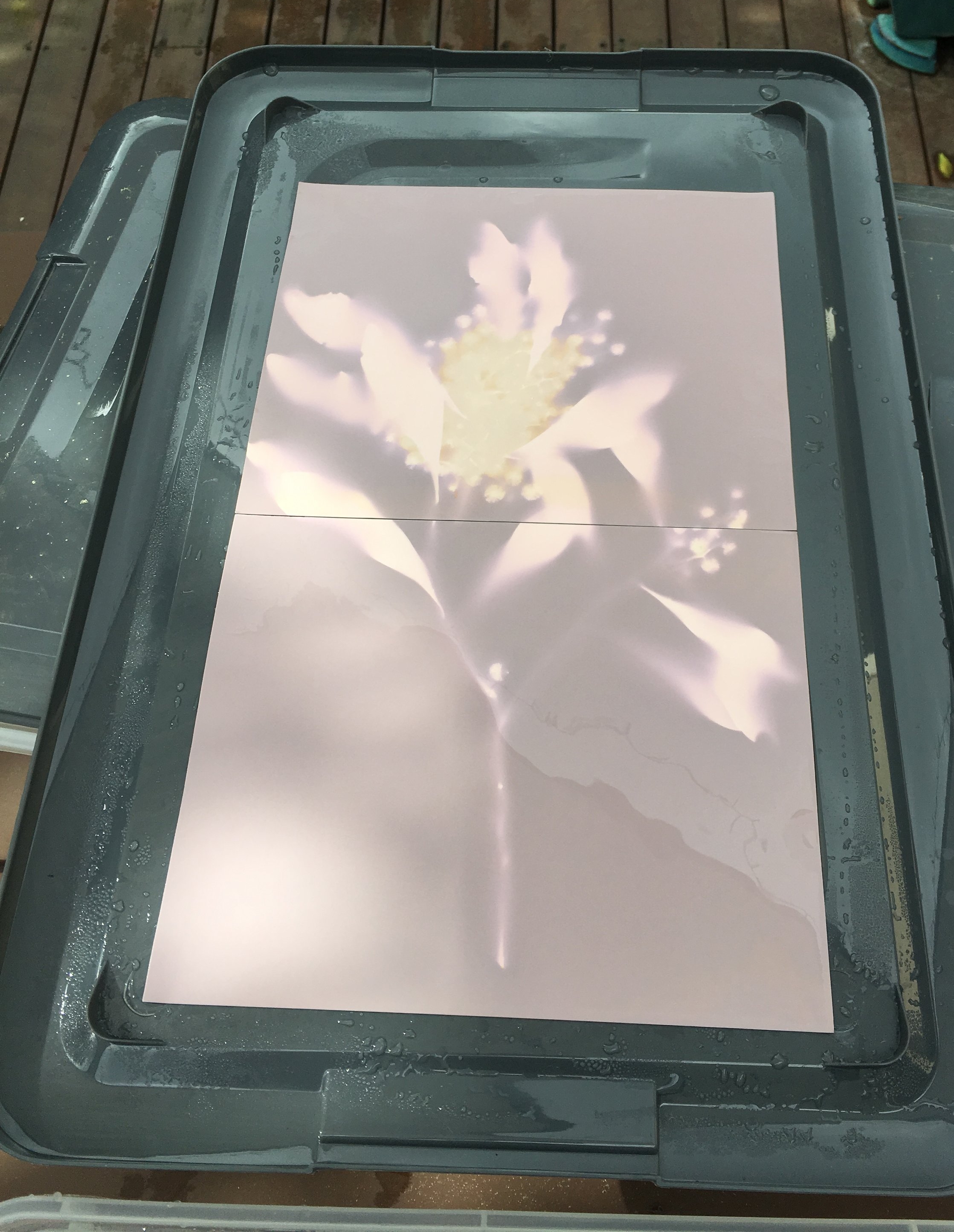Well, that escalated quickly…
Just a few months ago, I was pottering about in my backyard, making lumens for myself. I love the concertina photobook format, and I feel it works best with a small, cohesive series of images that can work individually or when viewed as a whole.
As I continued making lumens with plants foraged from my neighbour’s yards, I felt they would sit nicely together in this way, and worked towards completing the book for the end of the year. Having a deadline is always motivating for me, so I set myself the challenge to enter this photobook to the CCP Salon. I usually enter a print or two as a fun way to celebrate the end of year - but making a book, that was a whole other ball game.
Fast forward through many trials and tests – those following along on instagram would have seen much of this in my stories – I completed the book just in time to drop it off for the salon.
I attended the opening on an incredibly hot and sticky evening, and as the speeches were about to start I departed to avoid being stuck inside with a sea of humanity. The CCP salon opening is always well attended and if you’re in the room when the speeches start there is no way out until they end. The CCP Salon gives 30 separate awards…I had friends waiting outside who had given up on the heat half-an-hour earlier… It seemed like the best time to leave.
Not a moment later I got a call from a friend sensibly watching the announcement at home on a live stream, she wasn’t making sense ‘I HEARD YOUR NAME!’ she shouted. ‘Go back! You’ve won something!’. I naturally did not believe her. It turns out she was correct, and mine was the first award announced on the night. I missed my moment of fame by less than 5 minutes, cue: face palm.
I was both shocked and surprised (in a good way), and thrilled to have my handmade photobook awarded ‘Best use of natural light’ at the 2017 CCP Salon, the 25th iteration of the annual open entry prize (and second year that photobooks could be entered). The judges were: Hoda Afshar, Artist; Elias Redstone, Independent Curator; Pippa Milne, CCP Curator. Thank you so much to the judges, CCP and the award sponsor Vanbar.
You can see all the excellent winners on the CCP website
What a way to end the year!





![[Test 1.1] Photogravure on cyanotype (light wash) with black ink](https://images.squarespace-cdn.com/content/v1/588f26b93a0411d31b531dd6/1492004363919-9IIIG53IC5V3F3JSJFHP/photogravure_004.jpg)
![[Test 1.2] Photogravure on cyanotype (light wash) with black ink](https://images.squarespace-cdn.com/content/v1/588f26b93a0411d31b531dd6/1492004363549-OUL9TR1FLY4T437W9O3G/photogravure_003.jpg)
![[Test 2] Photogravure on cyanotype (full strength with salt and pooling for tonal variation) with darker black ink](https://images.squarespace-cdn.com/content/v1/588f26b93a0411d31b531dd6/1492004374799-OT4L95QP8FR46VA1W7ZN/photogravure_005.jpg)
![[Test 3.1] Photogravure with black ink on warm-tone etching paper](https://images.squarespace-cdn.com/content/v1/588f26b93a0411d31b531dd6/1492825159282-E3EH09DPDJ10F36VOIPH/photogravure_001.jpg)
![[Test 3.2] Photogravure with black ink on warm-tone etching paper](https://images.squarespace-cdn.com/content/v1/588f26b93a0411d31b531dd6/1492825159392-13EUI4IMSDFBAMNXVQDS/photogravure_002.jpg)
![[Test 4.1] The plate inked up with black and a blue rollover ready to print](https://images.squarespace-cdn.com/content/v1/588f26b93a0411d31b531dd6/1492825440609-B7XHX9MU90EFQW9X3PP1/inked-up-plate.jpg)
![[Test 4.2] Photogravure - black ink and blue rollover](https://images.squarespace-cdn.com/content/v1/588f26b93a0411d31b531dd6/1492825109945-QU3WEDGCQW54JC9XPX6E/photogravure_006.jpg)